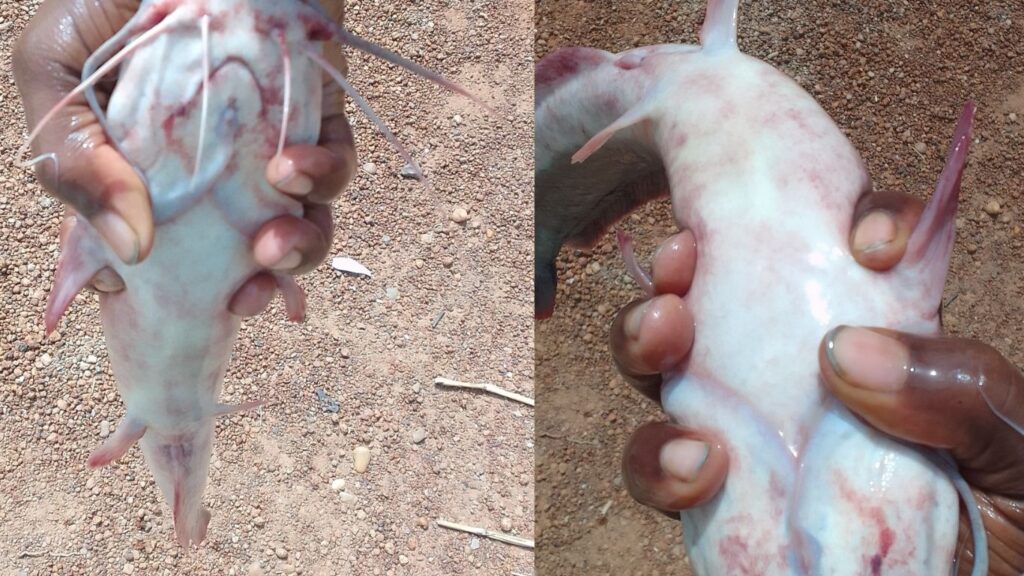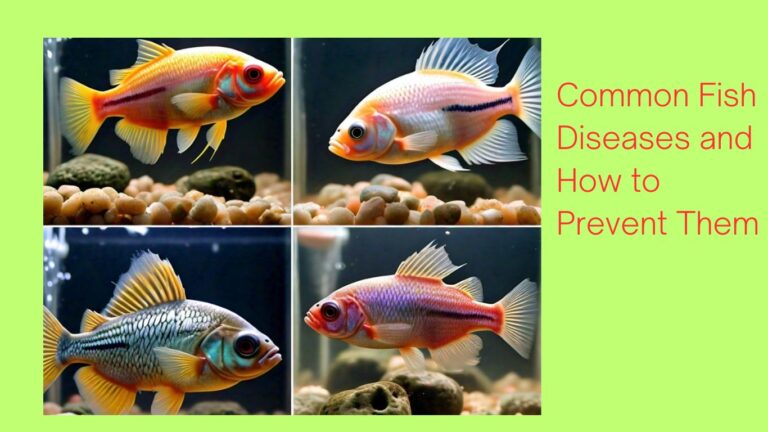Common fish diseases are the most disturbing and unfortunate things happening to fish farmers.
Fish are wonderful pets that bring beauty and tranquility to our homes. Like any living creature, they are susceptible to diseases.
Understanding common fish diseases and how to prevent them is essential for maintaining a healthy aquarium environment.
In this comprehensive guide, we shall explore the most prevalent fish diseases, their causes, symptoms, their effects, and effective prevention strategies.
Understanding Common Fish Diseases
1. Ichthyophthirius (Ich)
Ich, also known as white spot disease, is one of the most common fish diseases affecting freshwater and saltwater fish. It is caused by the protozoan parasite Ichthyophthirius multifiliis.
– Causes: Ich can be introduced into the aquarium through new fish, contaminated plants, or equipment.
– Symptoms: Affected fish develop white spots resembling grains of salt on their fins, gills, and body. They may also show signs of flashing (rubbing against objects) and lethargy.
Effects of Ichthyophthirius (Ich)
– Physical Damage: The presence of white spots on the fish’s body can cause physical damage to the skin and gills, leading to open wounds and increased susceptibility to secondary infections.
– Respiratory Distress: Severe infestations of Ich can affect the gills, impairing the fish’s ability to breathe properly. This can result in respiratory distress, indicated by rapid gill movement and gasping at the water’s surface.
– Stress and Weakened Immune System: Constant itching and irritation from the parasite can stress the fish, weakening its immune system and making it more susceptible to other diseases.
– Reduced Appetite and Growth: Infected fish often exhibit reduced appetite, leading to weight loss and stunted growth, especially in young or developing fish.
2. Fin Rot Fish Disease
Fin rot is a bacterial infection that primarily affects the fins and tails of fish, resulting in deterioration and fraying of the affected tissues.
– Causes: Poor water quality, overcrowding, and stress weaken the fish’s immune system, making them susceptible to bacterial infections.
– Symptoms: Ragged or rotting fins, inflammation, and discolored patches on the fins and tail. In severe cases, the fin may erode completely, leaving the fish vulnerable to secondary infections.
Effects Fin Rot as common fish disease
– Loss of Fins and Tails: Fin rot gradually deteriorates the fins and tails of affected fish, compromising their ability to swim effectively and leading to a loss of balance and mobility.
– Secondary Infections: As the disease progresses, the exposed tissues become prone to secondary bacterial and fungal infections, further exacerbating the condition.
– Pain and Discomfort: The infection causes inflammation and tissue damage, resulting in pain and discomfort for the fish. This can lead to increased stress levels and a decreased quality of life.
– Reduced Lifespan: Severe cases of fin rot can weaken the fish’s overall health and shorten its lifespan, particularly if the infection spreads to vital organs or causes systemic illness.
3. Dropsy as Common Fish Disease
Dropsy, also known as ascites, is a symptom of several underlying common fish diseasess rather than a specific disease itself. It is characterized by the swelling of the fish’s abdomen due to fluid retention.
Fish with dropsy are sometimes said to be “pineconing,”. This refers to a bristly appearance they take on when swelling causes their scales to protrude.
– Causes: Dropsy can be caused by bacterial infections, parasites, or underlying organ failure, often exacerbated by poor water quality.
– Symptoms: Swollen abdomen, protruding scales, lethargy, loss of appetite, and difficulty swimming.
Effects Dropsy
– Organ Failure: Dropsy is often a sign of underlying organ failure, particularly affecting the kidneys and liver. The buildup of fluid in the abdomen puts additional strain on these organs, leading to further dysfunction.
– Difficulty Swimming: The swelling in the abdomen can make it difficult for the fish to maintain proper buoyancy and swim normally, causing distress and exhaustion.
– Decreased Oxygen Intake: The pressure from the swollen abdomen can compress the fish’s swim bladder and other internal organs. This reduce its ability to take in oxygen and leading to respiratory problems.
– Death: Without prompt treatment, dropsy can be fatal. Even with treatment, the prognosis may be poor if the underlying cause is severe or irreversible.
4. Swim Bladder Disorder Fish Disease
Swim bladder disorder affects the fish’s buoyancy, causing them to float uncontrollably or sink to the bottom of the aquarium.
– Causes: Swim bladder disorder can be caused by overfeeding, constipation, bacterial infections, or physical injuries.
– Symptoms: Fish may swim erratically, float upside down, or struggle to maintain their balance. They may also show signs of lethargy and loss of appetite.
Effects of Swim Bladder Disorder Fish Disease
– Buoyancy Issues: Fish affected by swim bladder disorder may struggle to maintain their position in the water, leading to floating, sinking, or flipping upside down.
– Difficulty Feeding: Fish with swim bladder problems may have difficulty reaching food or swallowing properly, resulting in malnutrition and weight loss.
– Increased Vulnerability: Erratic swimming behavior and abnormal posture make affected fish more vulnerable to predation and injuries from tank mates and decorations.
– Stress and Behavioral Changes: Constantly struggling to maintain balance and orientation can cause stress and behavioral changes in affected fish such as hiding, reduced activity, or aggression.

Prevention Strategies of Common Fish Disease
1. Maintain Good Water Quality
Regular water changes, proper filtration, and monitoring of water parameters such as ammonia, nitrites, and nitrates are crucial for preventing fish diseases.
Aim for stable pH levels and appropriate temperature ranges for your fish species. Good water quality is the best way of keeping healthy fish and avoiding common fish disease.
2. Quarantine New Fish
Before introducing new fish into your aquarium, quarantine them in a separate tank for at least two weeks. This helps prevent the spread of common fish diseases to your existing fish population.
3. Avoid Overcrowding
Overcrowding can stress fish and compromise their immune systems, making them more susceptible to diseases. Follow recommended stocking guidelines and provide adequate space for each fish. This can help prevent common fish diseases.
4. Feed a Balanced Diet
Overfeeding can lead to digestive issues and water contamination. Feed your fish a varied diet of high-quality foods in appropriate quantities, and remove any uneaten food to maintain water quality. Select best and quality type of feed for your fish
5. Practice Good Hygiene
Clean aquarium equipment, decorations, and substrate regularly to prevent the buildup of harmful bacteria and parasites.
Use separate nets and equipment for each aquarium to avoid cross-contamination therefore reducing common fish diseases.
Conclusion
Taking proactive measures to prevent common fish diseases is essential for maintaining the health and vitality of your aquarium inhabitants.
By understanding the causes, symptoms, and prevention strategies outlined in this guide, you can create a successful aquatic environment where your fish can flourish for years to come.
Remember to observe your fish closely, address any signs of illness promptly, and consult with a veterinarian or experienced aquarist if needed.
With proper care and attention, you can enjoy the beauty of your aquarium without the worry of common fish diseases.





